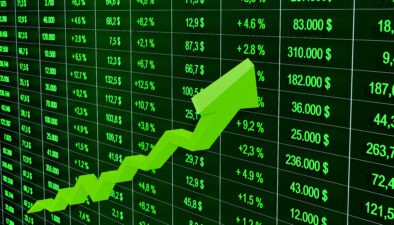There’s no doubt about it—Potash Corp./Saskatchewan Inc. (TSX:POT)(NYSE:POT) has an incredibly favourable position in the global potash industry. Currently the world’s largest producer, Potash Corp. possesses 20% of global capacity, and nearly half of all new potash capacity is estimated to come online over the next five years.
This large market share—combined with the fact that Potash Corp. jointly markets its potash through the Canpotex cartel with Agrium Inc. and Mosaic Inc.—allows a degree of control over potash prices, which in turn allows Potash Corp. to earn over 60% gross margins on potash sales, and overall gross profit margins of nearly 40%.
Despite this, Potash Corp. is still a commodity company at its core, and is largely dependent on prices of potash for its growth. Investors commonly purchase Potash Corp. to take advantage of the incredible long-term fundamentals for potash—driven by population growth and more demand for food. In the next five years, however, the potash market faces major challenges, and investors need to understand these risks before buying.
The basic idea behind investing in Potash Corp.
On a long-term horizon, the demand situation for potash is poised to improve dramatically. This is driven largely by population growth, food demand growth from emerging economies, reduction in arable land, and shifting food demands from emerging economies.
On a broad scale, population is expected to increase to eight billion by 2024, and 9.5 billion by 2050. Along with this, increasing urbanization works to both decrease available land for farming as well as increase demand for food, which will put upwards pressure on food prices and therefore on potash prices. Less available land for production means farmers need to focus on the yields they get from current land, which opens the door for potash demand.
Emerging economies’ increasing food demand and shifting dietary patterns will be the source of the most growth though. Sub-Saharan Africa and India are expected to experience explosive growth in caloric intake, and China, India, Sub-Saharan Africa, and Brazil are expected to experience an 11.7% growth in calories consumed from cereals, 11% from beef, and 22% from chicken.
Where does potash fit in here? As previously mentioned, not all of the food demand can be met by increasing available land, therefore the demand fertilizer will need to increase to drive yields higher. Most importantly, potash is expected to experience the most growth compared with other fertilizers. A proper blend of potash, nitrogen, and phosphate is needed, and China and India hugely underuse potash, which reduces yields. Simply increasing the same proportion of potash use as the United States would drive potash consumption up 36% annually.
The problem in the short term
While these are strong long-term trends, in the short term the potash market is suffering from a large amount of oversupply, combined with weak demand. Looking at potash prices tells the story well—prices were once over US$800 per ton in 2009, falling to over US$300 per ton.
Part of this is due to weak demand from China as it transforms into a slow-growth economy. Globally, potash demand growth has been nearly flat since 2007.
The main issue, however, is supply. Firstly, while the potash industry was typically considered an oligopoly with a few producers working to control supply , the recent break up of the Eastern European BPC cartel (between Uralkali and Belaruskali) means both producers are now producing at full capacity rather than controlling production to keep prices high. This sent potash prices plummeting in 2013.
Belaruskali has been pushing for market share, recently undercutting Canpotex in a deal with China, and is now starting to sell in the U.S. for the first time to gain market share. To make matters worse, there is plenty of new supply coming online. K+S AG’s new Legacy mine in Saskatchewan is expected to produce four million tonnes of potash by 2035, and BHP Billiton is likely to begin work on its eight-million ton Jansen mine eventually.
The end is result is that while the long-term fundamentals are solid for Potash Corp., investors need to be aware of the huge short-term risk for potash prices.
 Stock Up Sale
Stock Up Sale







